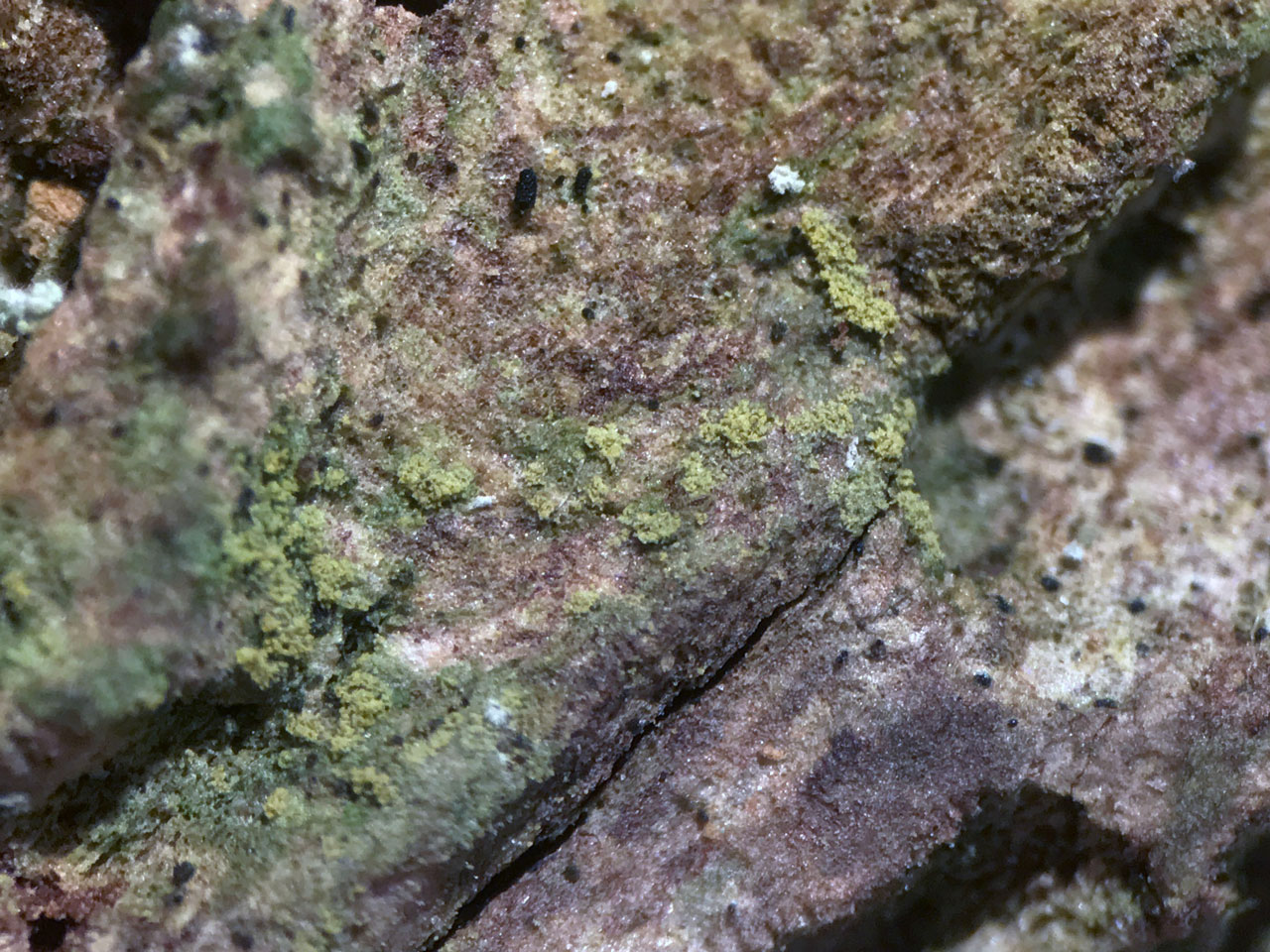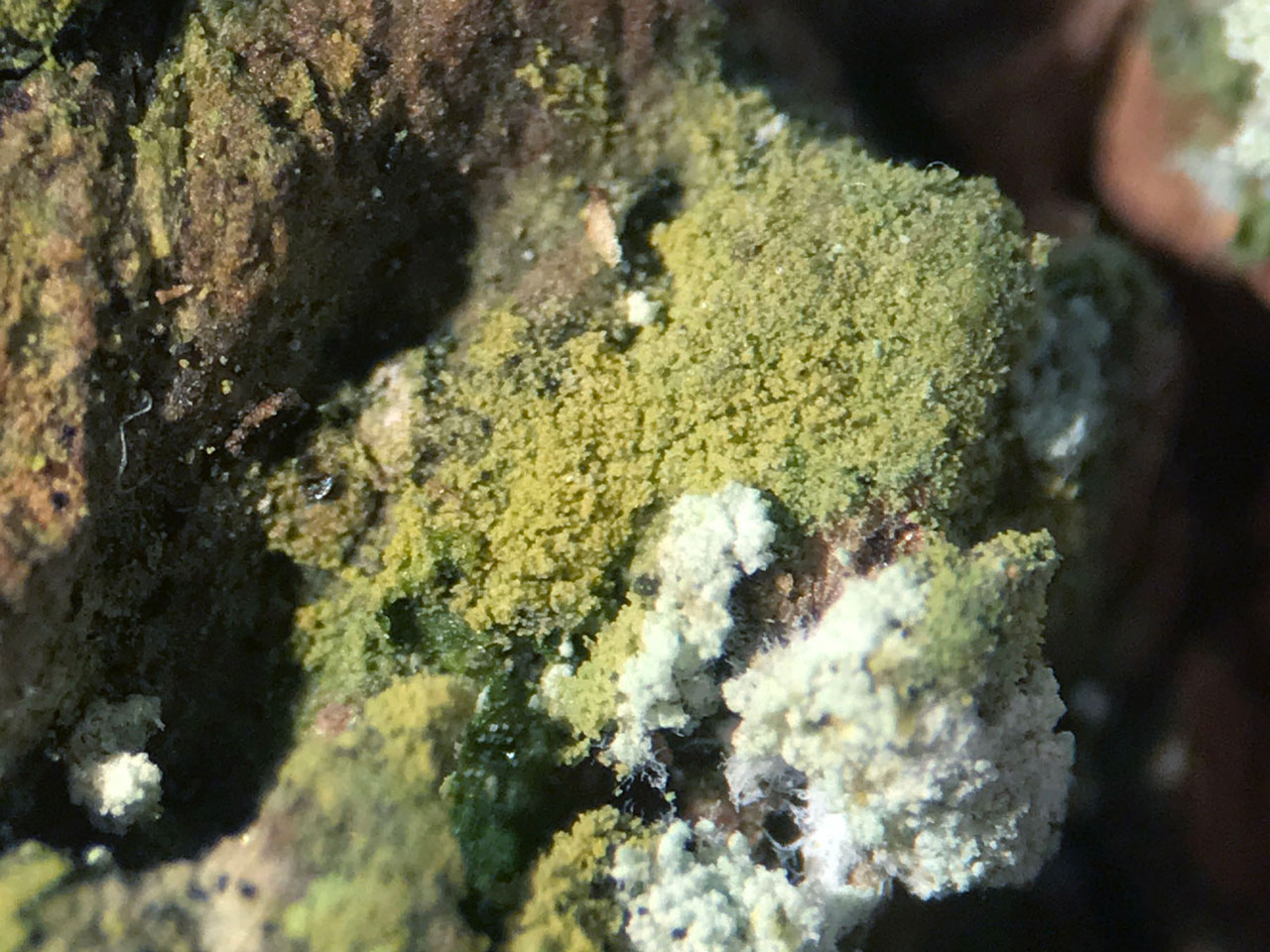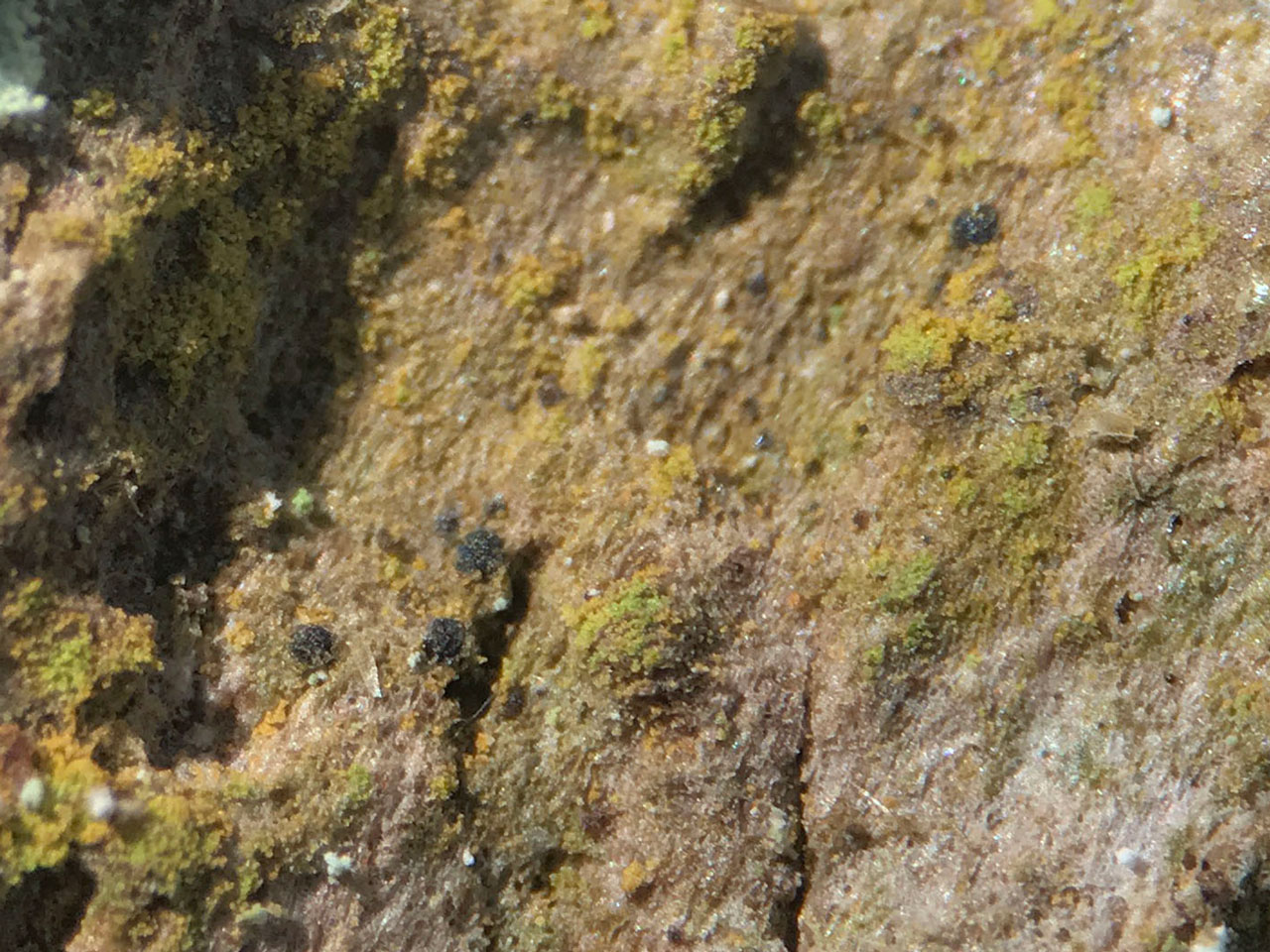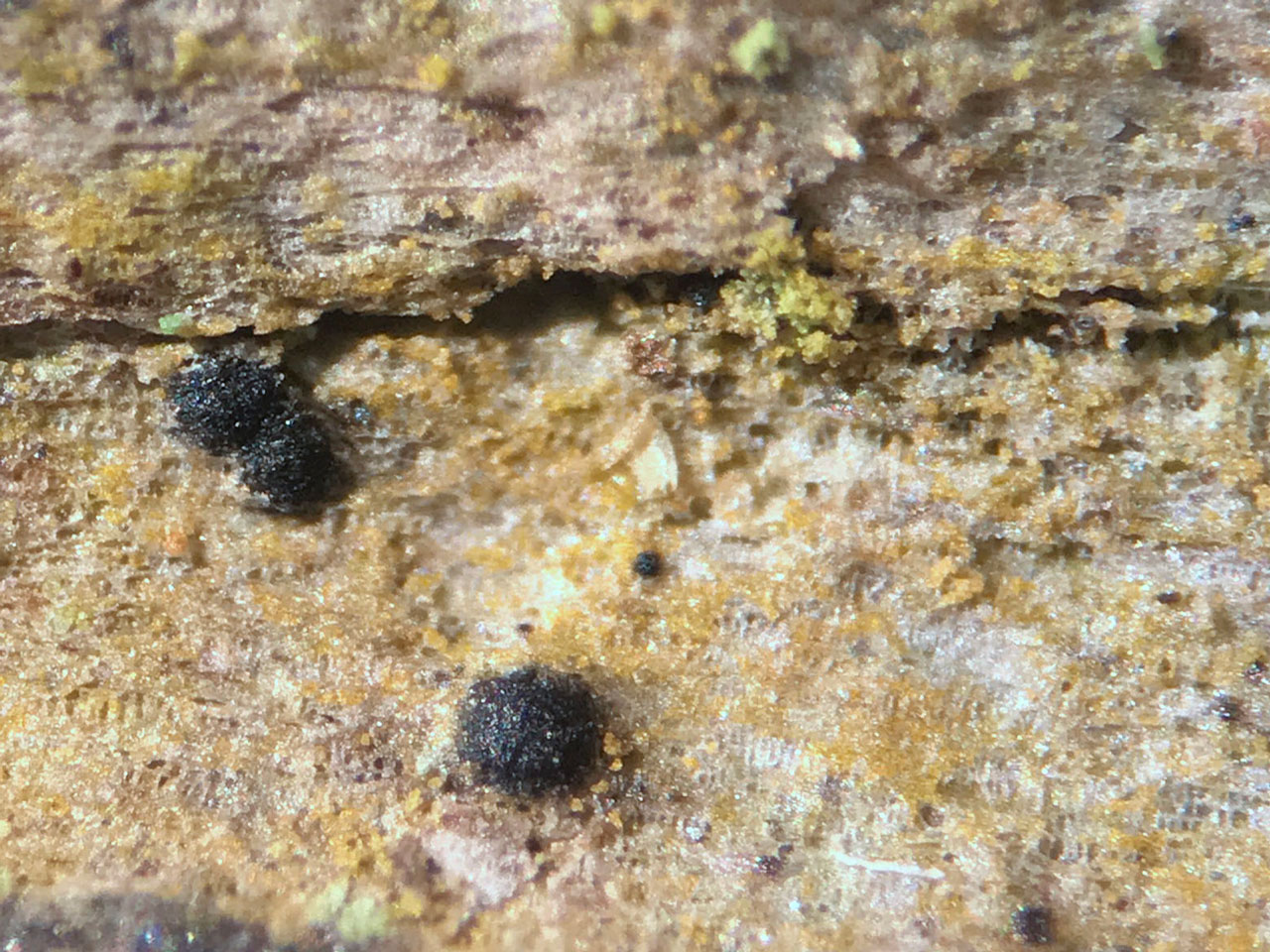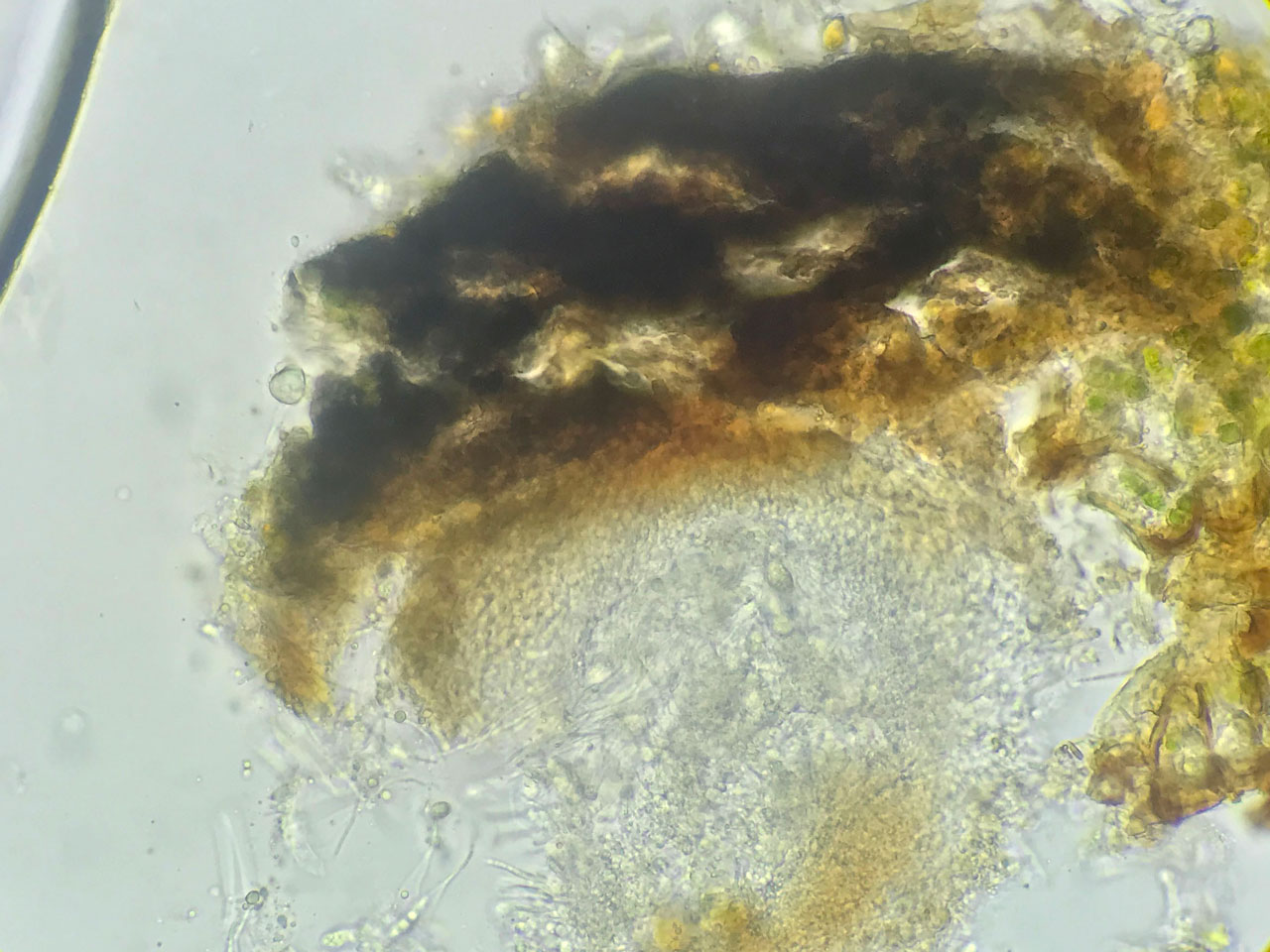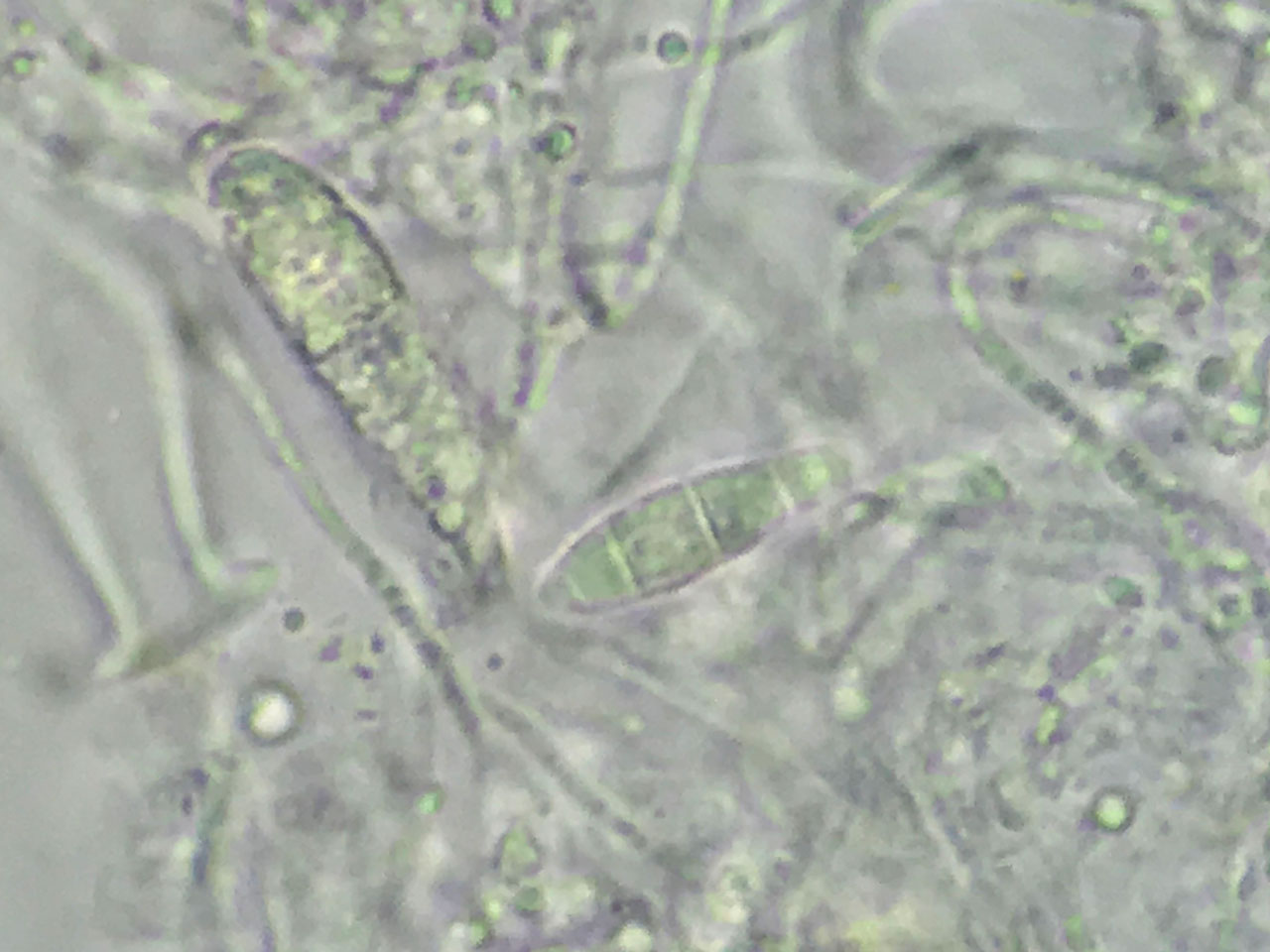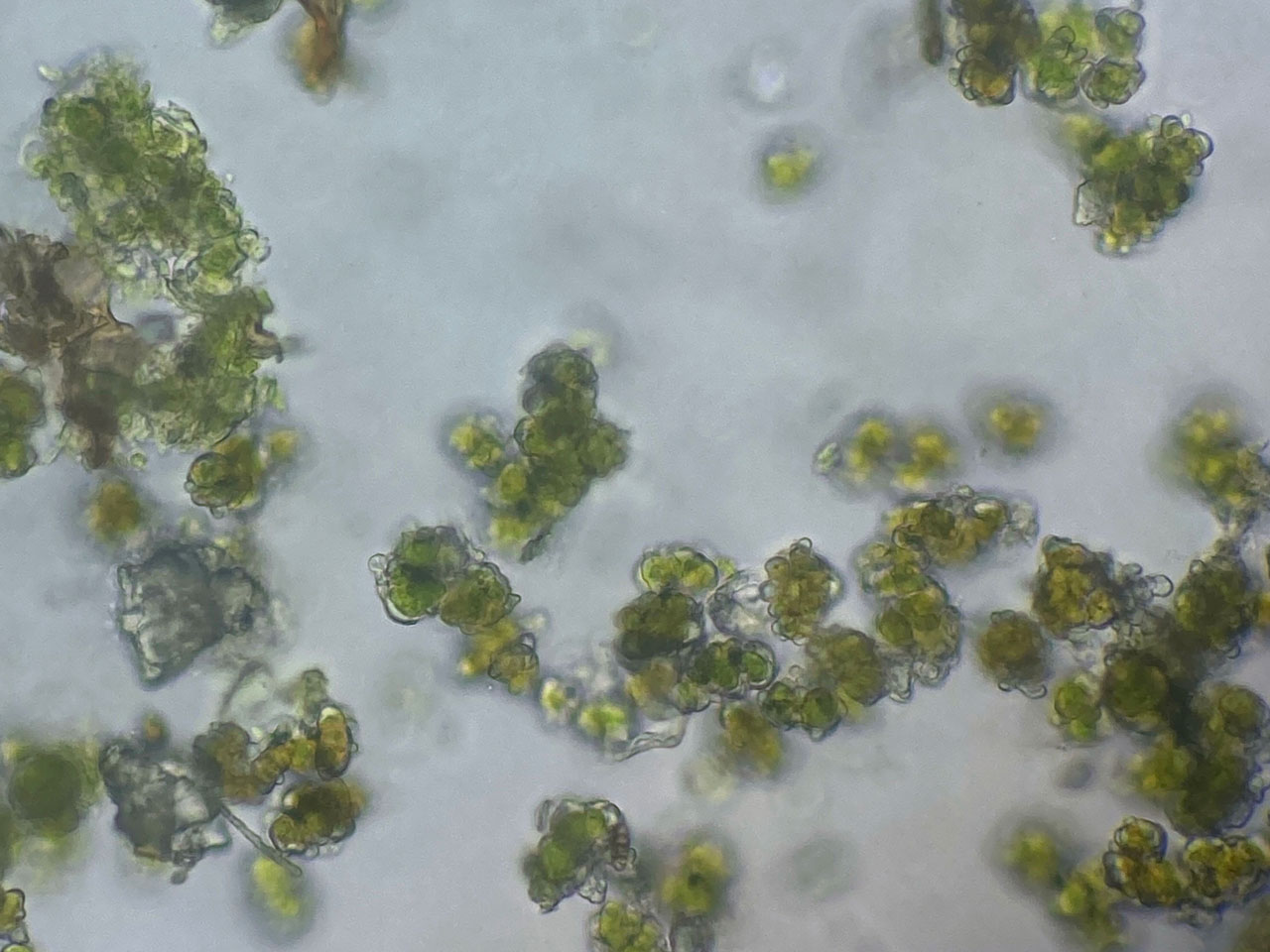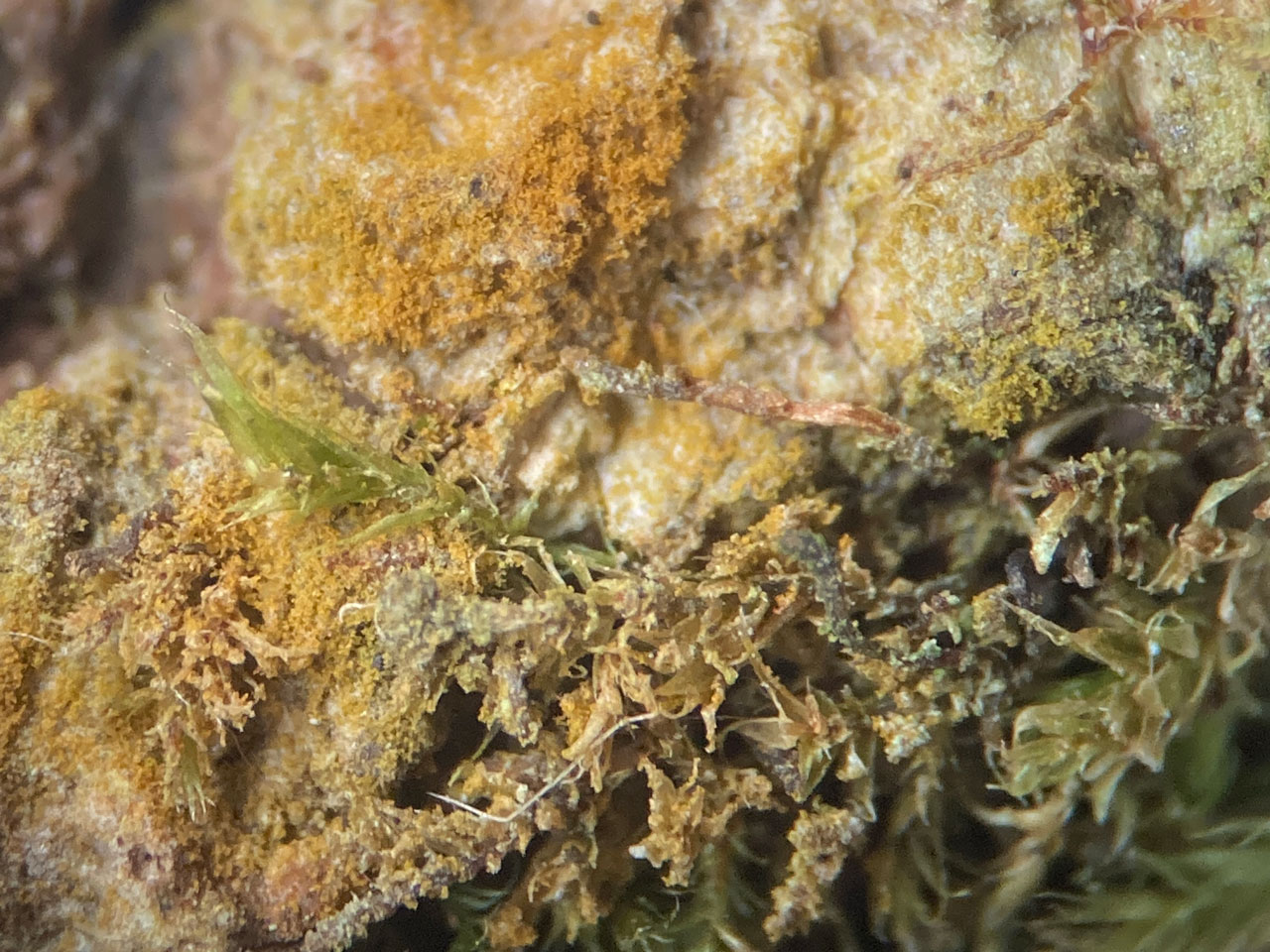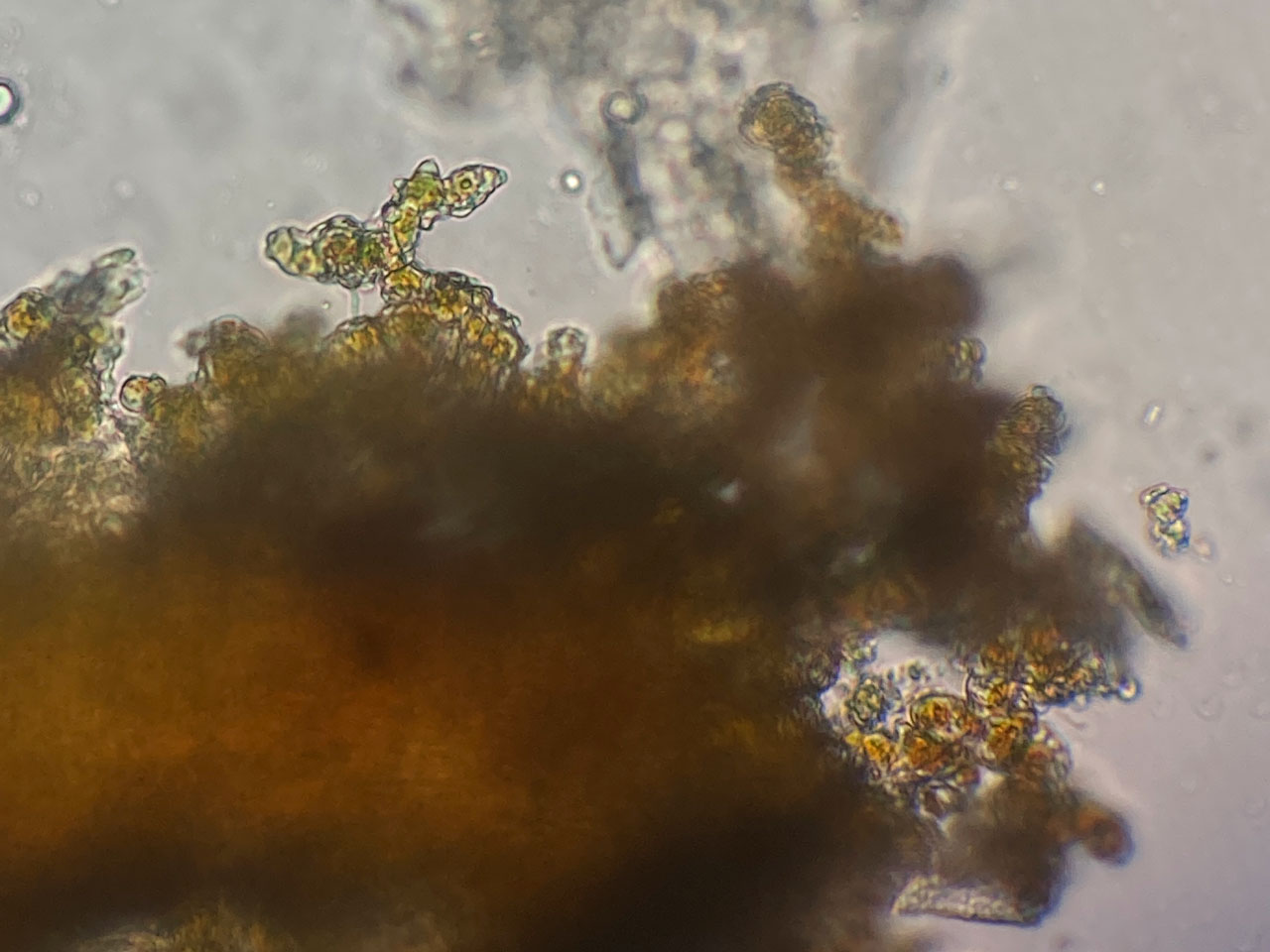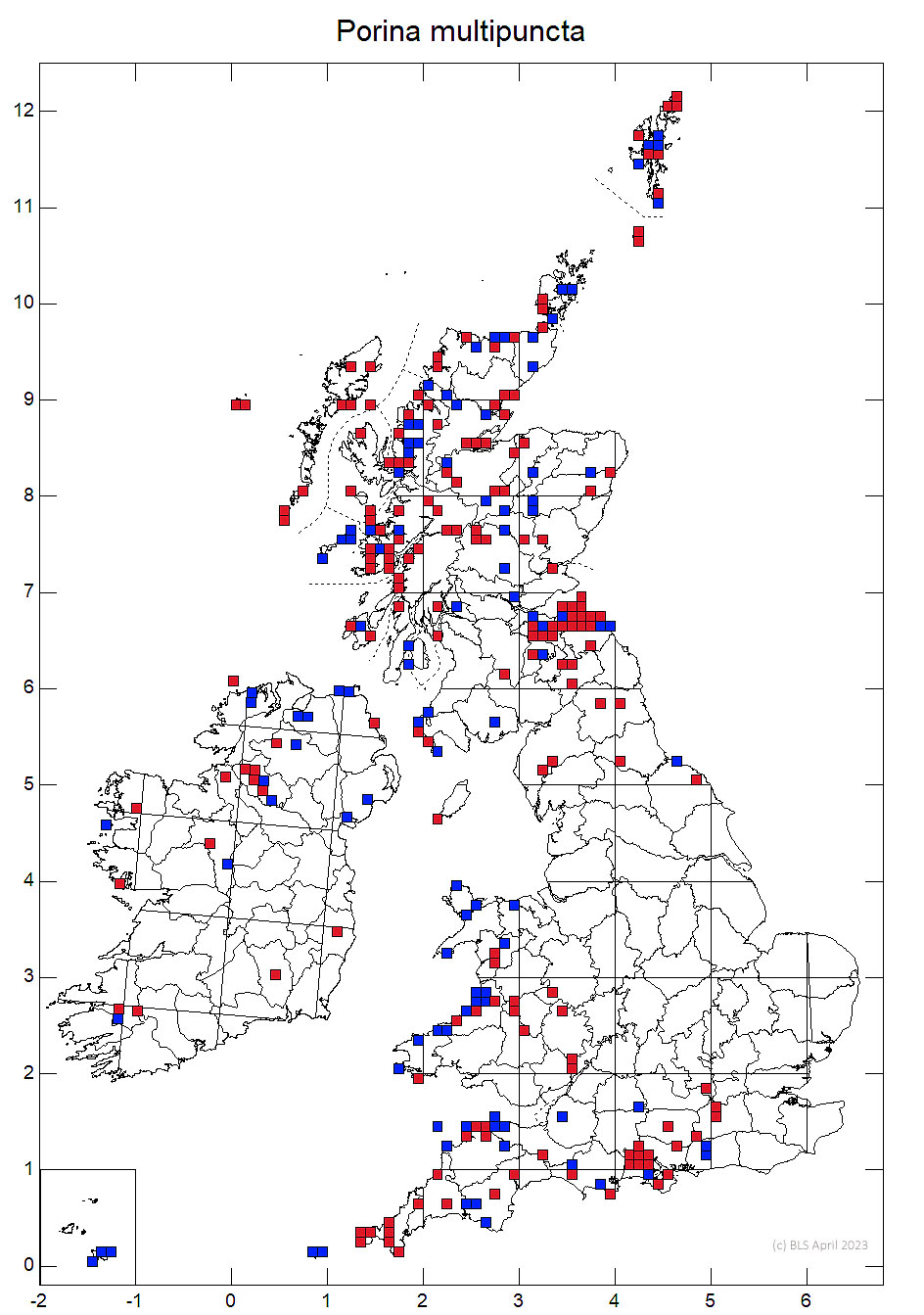The most widespread of several corticolus lichens resembling Zwackhia sorediifera, in their orange punctiform soralia, but differing in their C– spot test. In this species the soralia often become becoming confluent, while the other two much less frequent C– sorediate species, Thelopsis corticola and Francisrosea bicolor both have non confluent, persistent, defined and roughly circular soralia. In the north west widespread small branches in damp, often sheltered or boggy sites but more typical of damp shaded base rich bark on veteran trees in the south. Also on deeply shaded rock and below overhangs, especially on or near the coast.
Thallus thin, wide-spreading, smooth or somewhat sparingly rimose-cracked, or scurfy, superficial or partly immersed, effuse, dull or dark red-brown, rarely paler, becoming grey and discoloured in dried collections; soralia bright orange when fresh,usually evenly coloured with little green colour showing unless damaged, fading to pale dull cream-grey in dried collections, 0.1-0.3 mm diam., small, rounded or sigmoid, punctiform, very numerous, erose to excavate, discrete, becoming confluent or forming a minute mosaic of tiny irregular soralia; soredia very fine, 15–45 × 13–25 μm in size, photobiont partly enclosed by hyphae, fungal cells sometimes conical, giving an angular appearance to the soredia; rarely propagules arise singly on the thallus and develop into very fragile aggregations of minute isidia like granules 25–50 × 25–37 μm in size. Ascomata very rare (known from S.W. & Mid Wales), 200–280 μm diam., brown, immersed below; exciple brown, K–, orange within and K+ orange-red. Ascus with ring structure. Ascospores 16–22.5 × 3–5.5 μm. Soralia C–, K–, KC–, Pd–, UV– (no lichen products detected by TLC).
Porina multipuncta is characterised by the wide-spreading thallus studded with numerous tiny bright orange soralia; it is the only sorediate species of the genus in Britain. Young material of P. multipuncta may resemble Zwackhia sorediifera (Arthoniales: Lecanographaceae), which has a paler thallus and generally paler soralia, with the soredia coarser, more strongly green internally and C+ reddish. Thelopsis corticola (Ostropales: Gyalectaceae) and Francisrosea bicolor (Ostropales: Gyalectaceae) are C–, but both have non confluent, persistent, defined and roughly circular soralia. The former also has fine soralia but these are pale ochre with green tinges, while the latter has coarser orange and green soralia. The rare isidiate-graunlar form can be confusing and can resemble Porina collina or Porina rosei, but the granules are finer than the isidia of either of these species.
On small branches of scrub-trees, including Hawthorn, Hebe, Juniper, Willow spp. and Wych Elm; in damp, often sheltered or boggy sites in the north west, on base rich bark on veteran trees, mainly Oak, in the south; scattered. Also on deeply shaded rock and below overhangs, especially on or near the coast.

W. Britain, from the Isles of Scilly to Shetland (Unst), also scattered throughout Ireland. Porina multipuncta is often locally frequent and dominant in favoured sites in the N. & W., rather local in the south and lowlands. Scattered records in Ireland.
Orange, A., Cannon, P., Malíček, J., Sanderson, N., Coppins, B. & Simkin, J. (2021). Ostropales: Porinaceae, including the genus Porina. Revisions of British and Irish Lichens 4: 1-12.
Text by N A Sanderson, based Orange et al (2021)
